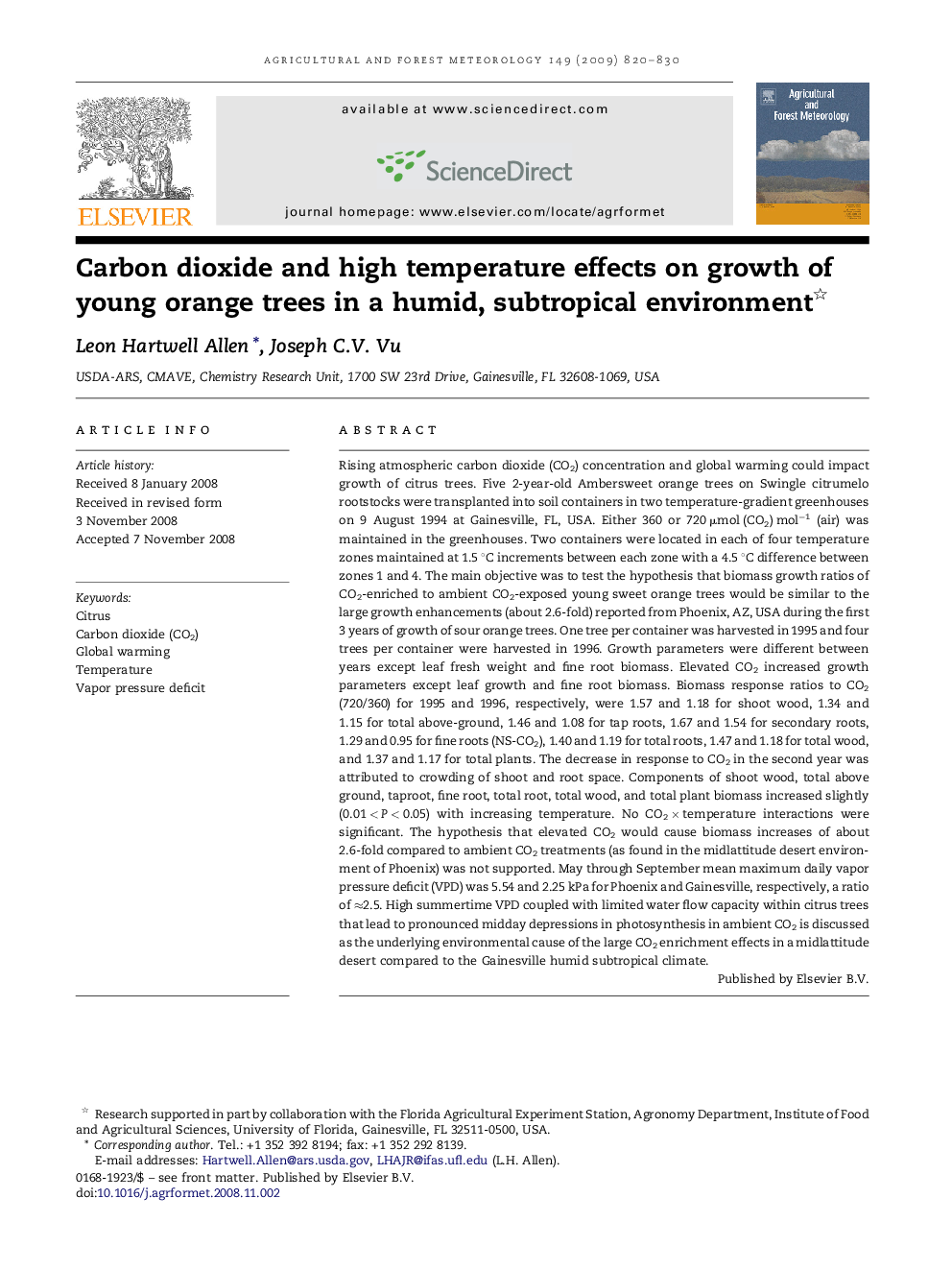| Article ID | Journal | Published Year | Pages | File Type |
|---|---|---|---|---|
| 82702 | Agricultural and Forest Meteorology | 2009 | 11 Pages |
Rising atmospheric carbon dioxide (CO2) concentration and global warming could impact growth of citrus trees. Five 2-year-old Ambersweet orange trees on Swingle citrumelo rootstocks were transplanted into soil containers in two temperature-gradient greenhouses on 9 August 1994 at Gainesville, FL, USA. Either 360 or 720 μmol (CO2) mol−1 (air) was maintained in the greenhouses. Two containers were located in each of four temperature zones maintained at 1.5 °C increments between each zone with a 4.5 °C difference between zones 1 and 4. The main objective was to test the hypothesis that biomass growth ratios of CO2-enriched to ambient CO2-exposed young sweet orange trees would be similar to the large growth enhancements (about 2.6-fold) reported from Phoenix, AZ, USA during the first 3 years of growth of sour orange trees. One tree per container was harvested in 1995 and four trees per container were harvested in 1996. Growth parameters were different between years except leaf fresh weight and fine root biomass. Elevated CO2 increased growth parameters except leaf growth and fine root biomass. Biomass response ratios to CO2 (720/360) for 1995 and 1996, respectively, were 1.57 and 1.18 for shoot wood, 1.34 and 1.15 for total above-ground, 1.46 and 1.08 for tap roots, 1.67 and 1.54 for secondary roots, 1.29 and 0.95 for fine roots (NS-CO2), 1.40 and 1.19 for total roots, 1.47 and 1.18 for total wood, and 1.37 and 1.17 for total plants. The decrease in response to CO2 in the second year was attributed to crowding of shoot and root space. Components of shoot wood, total above ground, taproot, fine root, total root, total wood, and total plant biomass increased slightly (0.01 < P < 0.05) with increasing temperature. No CO2 × temperature interactions were significant. The hypothesis that elevated CO2 would cause biomass increases of about 2.6-fold compared to ambient CO2 treatments (as found in the midlattitude desert environment of Phoenix) was not supported. May through September mean maximum daily vapor pressure deficit (VPD) was 5.54 and 2.25 kPa for Phoenix and Gainesville, respectively, a ratio of ≈2.5. High summertime VPD coupled with limited water flow capacity within citrus trees that lead to pronounced midday depressions in photosynthesis in ambient CO2 is discussed as the underlying environmental cause of the large CO2 enrichment effects in a midlattitude desert compared to the Gainesville humid subtropical climate.
